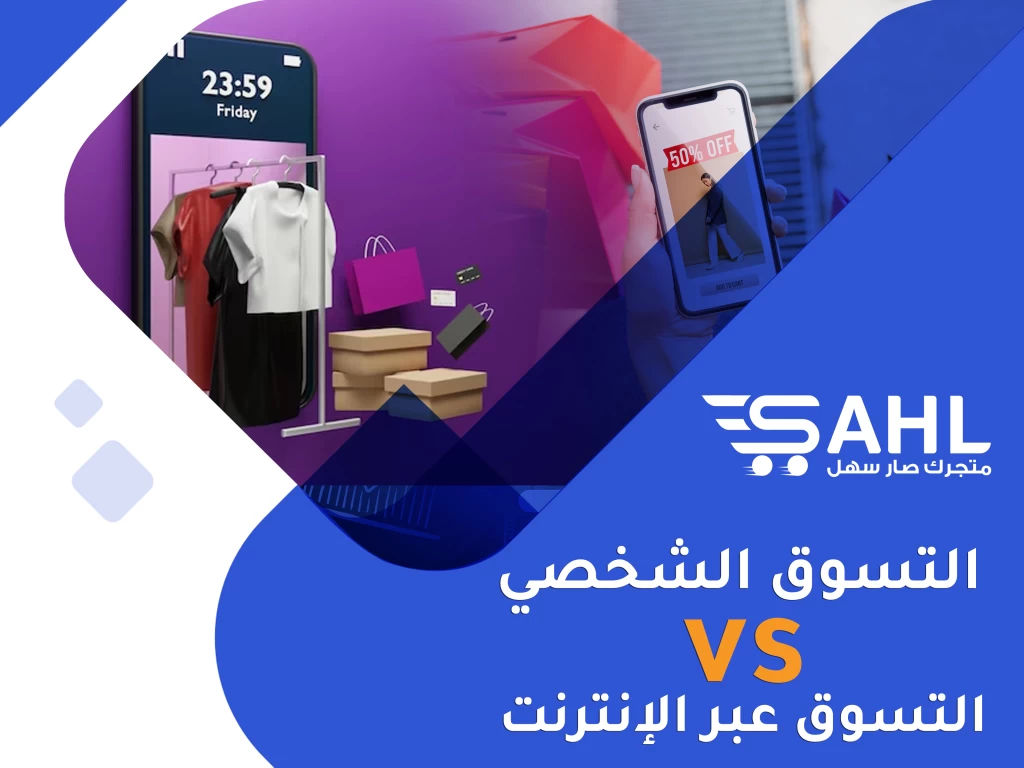Free support 24/7
Free support 24/7

The world of shopping has witnessed tremendous developments over the decades, as the ways and methods of shopping have changed radically. Among these developments comes the personal shopping experience and online shopping as focal points of the modern shopping experience. This article compares these two approaches, highlighting the advantages and disadvantages of each, and attempts to provide consumers with a comprehensive view on which of the two options best suits their needs and preferences.
Personal Shopping: The personal shopping experience relies on visiting physical shops and direct interaction with products and staff. This approach is characterized by human interaction and sensory gratification, whereby consumers can touch and test products before purchasing them. The visual, tactile, smell and taste experiences give the consumer a sense of confidence and reassurance.
One of the most important advantages of personal shopping is the ability to get first-hand advice from store staff. This can help buyers make better decisions based on their actual needs and requirements. Moreover, it gives consumers an opportunity to negotiate and bargain in some cases, which enables them to get better deals.
However, personal shopping also comes with some drawbacks. Limited experiences may potentially be if the stores available in a particular area are not as diverse or limited in offerings. Besides, personal shopping can be a time-consuming process, especially when it comes to moving between different stores and boutiques.
Online Shopping: The online shopping experience has revolutionized the world of commerce as consumers can purchase products and services from the comfort of their homes. It gives them access to a wide range of products from different brands and suppliers from around the world.
One of the main advantages of online shopping is the saving of time and effort. Consumers do not need to move between physical stores, but can easily browse products and choose what suits them best online. Moreover, buyers can compare prices and read product reviews through different websites and platforms, which helps them make smarter decisions.
However, there are some disadvantages associated with online shopping as well. It can be difficult to effectively assess the quality of products when consumers cannot see and test them themselves before purchasing. In addition, there can be delays in the delivery of products, especially if they require international shipping.
Personal shopping experience:
Sensory Interaction: Consumers can touch and test products before purchasing, and this gives them a better idea of the quality and suitability of the product.
Direct advice: Consumers can consult store staff and get their guidance and advice on which products are suitable for their needs.
Negotiation and Haggling: In some cases, consumers may haggle over prices or request discounts from stores.
Social Experience: Personal shopping can be a social activity that can be shared with friends or family members, adding to the fun of the experience.
Engage with the local community: By supporting local stores, consumers can contribute to the local economy.
Social Interaction: Consumers can connect with people and build relationships with employees and colleagues for repeat shopping experiences.
Discover unexpected surprises: Sometimes, consumers can discover unique products or special offers that they didn't know about before.
Unique Personal Experience: Personal shopping can be a unique experience that includes special moments and details, making it even more personal.
Dealing with defective goods: In the event that a defective or not good product is purchased, consumers can easily return or exchange it by visiting the store.
The ability to test fit: When purchasing clothes or shoes, consumers can try them on and check their fit and comfort before making a purchase.
Sense of social interaction: Shopping in stores can be an opportunity to interact with vendors and other customers, exchange opinions and conversations.
Real viewing experience: Consumers can see the products in real time inside the store, which can contribute to better appreciation of the features and quality of the products.
Interaction with the exhibits: In physical stores, consumers can touch and experience the exhibits directly, which enhances the feeling of being close to the product before purchasing.
Tour and Explore: Consumers can tour the store and explore the various departments and products indefinitely.
On-the-spot support: Staff in the stores can provide immediate support and assistance in case of questions or problems.
The opportunity to discover more: Consumers may find that browsing stores can allow them to discover new or unexpected products and learn about new innovations.
Actual buying experience: For some, actually buying and seeing products while buying can be an important part of the shopping experience.
First-hand knowledge of brand style: By interacting with products and employees, consumers can gain a better understanding of a brand's style and values.
Activate the senses: When shopping in person, consumers can activate their senses more, such as touch, smell, and hearing, which enhances the buying experience.
Negotiation and Relationships: In some cultures, price negotiation is part of the personal shopping experience and can lead to building good relationships with vendors.
Online shopping:
Convenience and ease: Online shopping can be done anytime and anywhere, saving consumers time and effort.
Save time and effort: Consumers do not need to move between physical stores, instead they can quickly browse and select products.
Compare & Evaluate: Consumers can compare prices and read ratings and reviews through online shopping platforms.
Access to a Wide Variety: Consumers can choose products from a wide range of a
You can create your store easily